Ever since I first stepped onto a train within the subway system in New York to interview for matriculation into the High School of Music and Art, I have had a fascination with subway maps — even more so than the subway systems themselves, actually…
6 Aerial Views of Metro Systems Around the World
…so when I had been given express written permission to use the images and the verbatim text from this article from QuickQuid into this article — which illustrates six metro systems from around the world as superimposed onto aerial photographs — I jumped at the opportunity.
Despite riding as a passenger for years below ground through the same neighborhoods, I never knew most of those neighborhoods or walked in them above ground — and that still fascinates me to this day. What would the experience be like if I traced the route above ground that I have traveled for years under ground?
…but with the advent of Google Maps, I can not only go to Street View and see the neighborhood above ground down to one block at a time; but I can also see where the subway line is located below the surface streets just by clicking on the letter M in a blue square where a subway station is located.
With articles such as this one, I sometimes add brief notes; but although I have been a passenger on some of the featured subway systems, I am not knowledgeable enough about them to add much value to the information which is already here — but regardless, let’s get started…
The Mystery of the Subterranean Rail Network
There’s something very science-fiction about a subterranean rail network. Even a century and a half after the world’s first subway system opened in London, taking a trip underground can be a thrill.
Part of the mystery of traveling underground is that most of us don’t really know where we are in relation to the surface when using the metro.
Back in 2017 Reddit users tried to solve this mystery by creating animations that contrasted subway maps with accurate geographical representations of subway lines. But it was still a stretch of the imagination to place the map onto the real world.
Luckily, planning theory and urban development researcher Martin Bangratz decided to solve the mystery by overlapping a realistic subway map on top of an aerial photograph of London. This image helped to accurately show where the London subway map really takes you.
Someone on reddit posted this aerial photo of #London, so I asked if I could use it to illustrate where the #tube goes. #dataviz #mobility #PublicTransport @TfL @Londonist pic.twitter.com/gOQbKvRkZc
— Martin "the mapprentice" Bangratz (@MartinBangratz) June 25, 2018
Martin studied International Economics and Business Studies in Innsbruck, and later added an MSc in Sustainable Urbanism at UCL. He undertakes a variety of design projects, mainly illustration and data visualization, alongside his day job.
Martin was invited to peel back the earth’s surface and show just where six of the world’s metro systems are really taking you.
1. Tokyo Metro
You’d expect Tokyo’s underground network to be chaos, right? After all, Japan is home to all but six of the 51 busiest train stations in the world, with Tokyo alone accounting for 13 billion passenger trips per year.
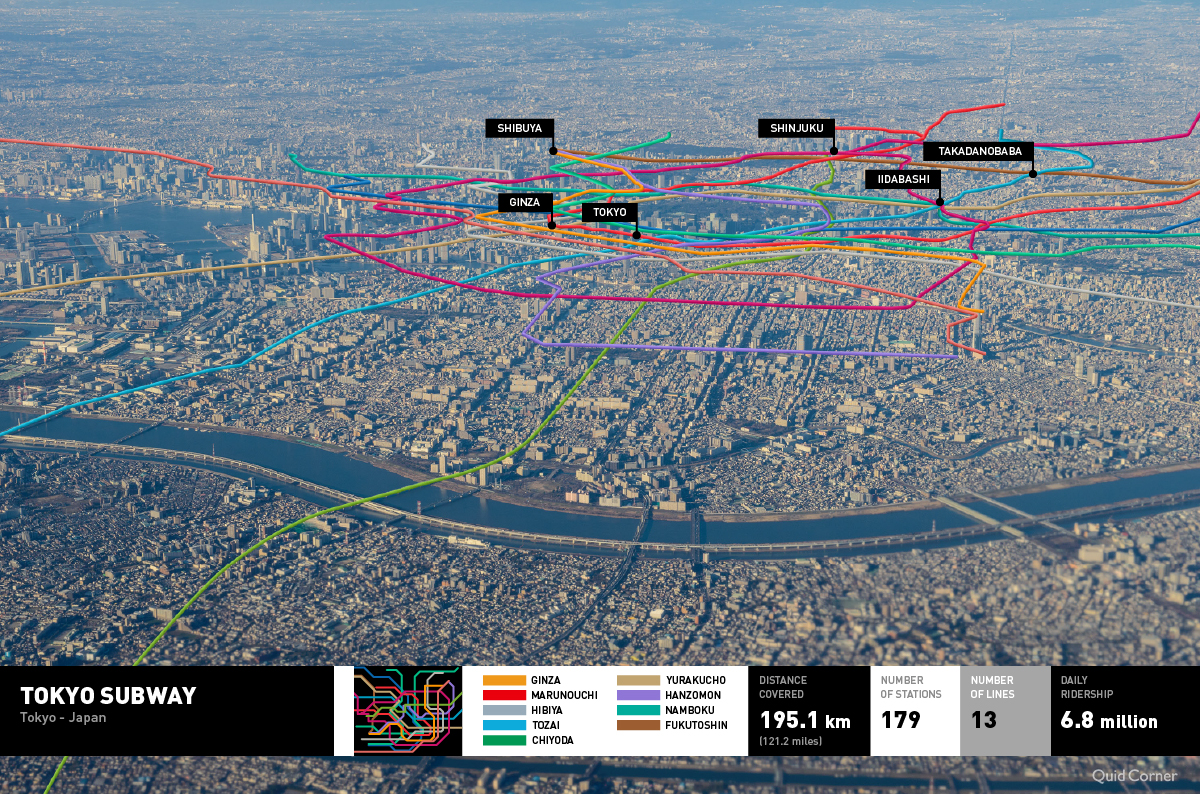
But Tokyo Metro stations can actually be a pleasant place to be – away from the bustle upstairs! Calming coloured LED panels, jolly alert signals (known as hassha melodies), and less friendly ultrasonic deterrents against anti-social behaviour keep everything ticking along nicely.
2. Berlin U Bahn
New York may have iconic yellow taxis, but Berlin’s iconic yellow subway trains are pretty cool, too. The city’s ‘Untergrundbahn’ (underground railway) opened in 1902 and is the largest of its type in Germany.
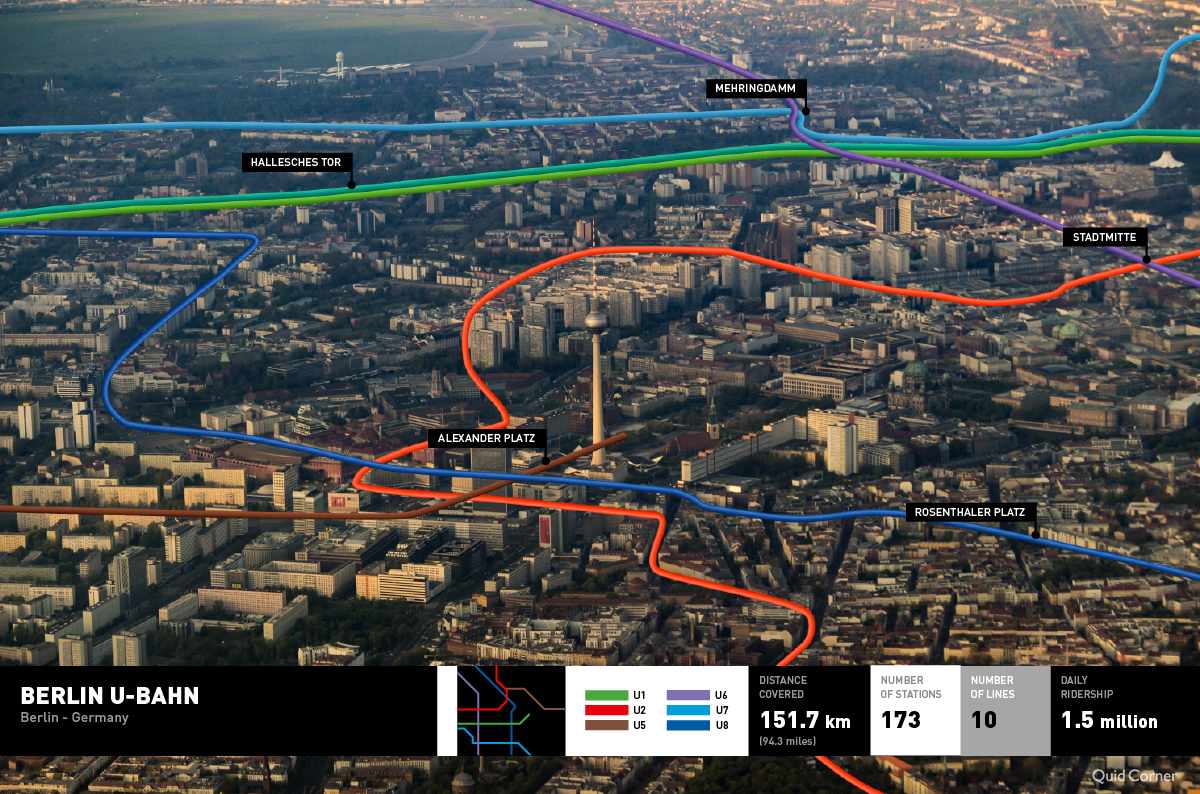
The system is notable for its honesty policy: there are no gates or inspectors at the stations, so you can just buy a ticket and get on board. But before you think about jumping your fare, remember that there are often ticket inspectors on the trains themselves – and over 7,000 repeat fare evaders end up in prison every year.
3. The Glasgow Subway
There are just 15 stations on the Glasgow underground, which opened in 1896. The system is known to locals as the ‘Shoogly Train’, from the slang verb ‘to shoogle,’ meaning to rattle and shake.
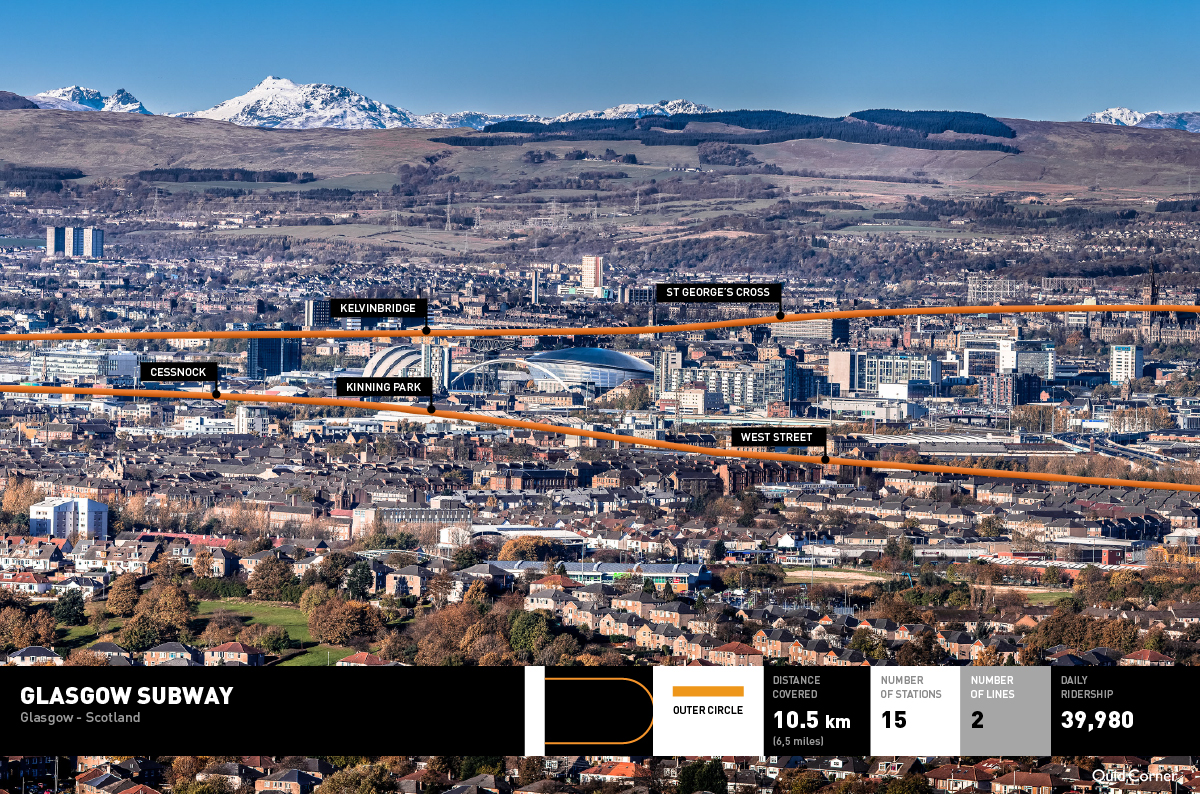
The Glasgow Subway was altogether less shoogly when the Queen re-opened it following an upgrade in the 1970s. But the network, which runs in a loop across the River Clyde, will probably always be shortened to the Shoogly by Glaswegians.
4. Boston MBTA
Boston’s subway is pretty expansive – it reaches far away to other cities such as Cambridge, Newton, Revere, and Quincy. It was the first subway in the US, appearing a year after the Shoogly first pulled into Glasgow.
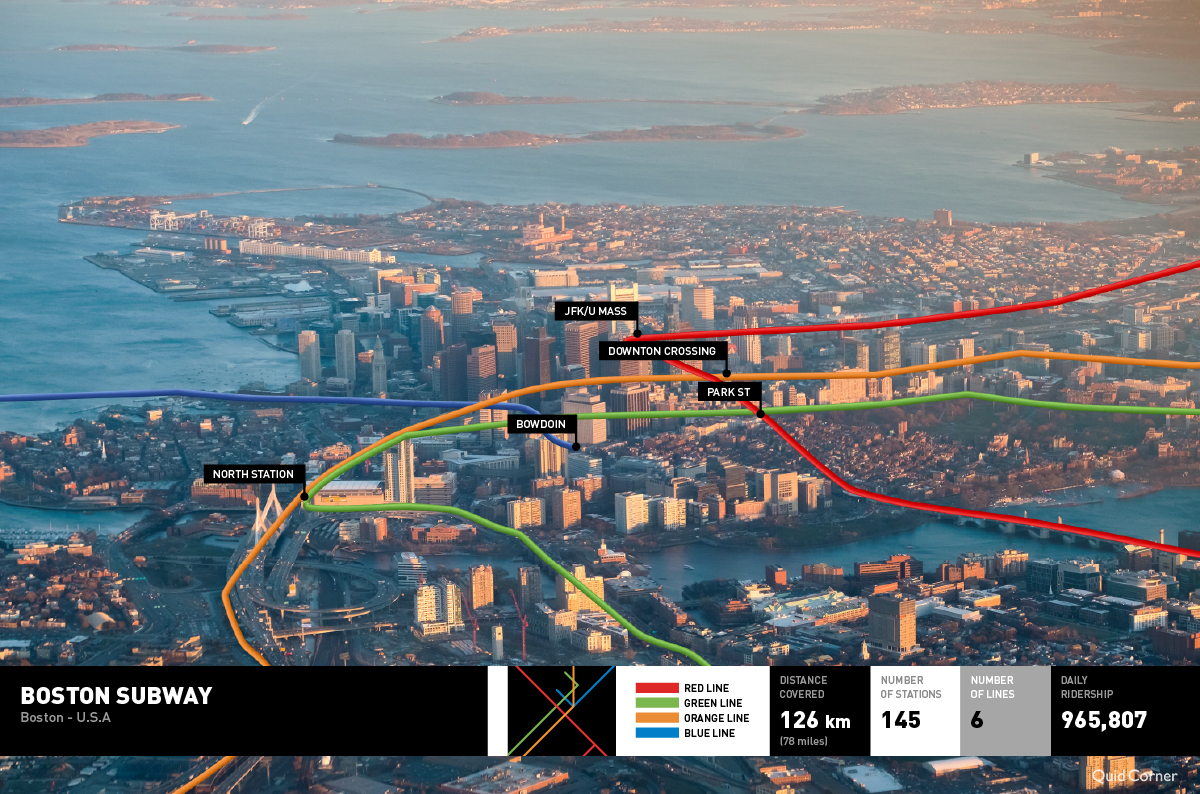
It might have been built earlier, but Americans were resistant to the idea of an underground steam train network like the one London had – the Tube was already notorious for being dark, dirty, and smelly. Up stepped New Yorker Frank Sprague, who developed an electric motor to make it possible for Bostonians to get around the city without being subjected to the awfulness of winter outside.
5. Moscow Metro
The city of Moscow is packed with historic buildings and sites of interest. But the subway down below is just as fascinating a slice through time, with references to what was going on ‘upstairs’ visible in the updates that have been made over the years.
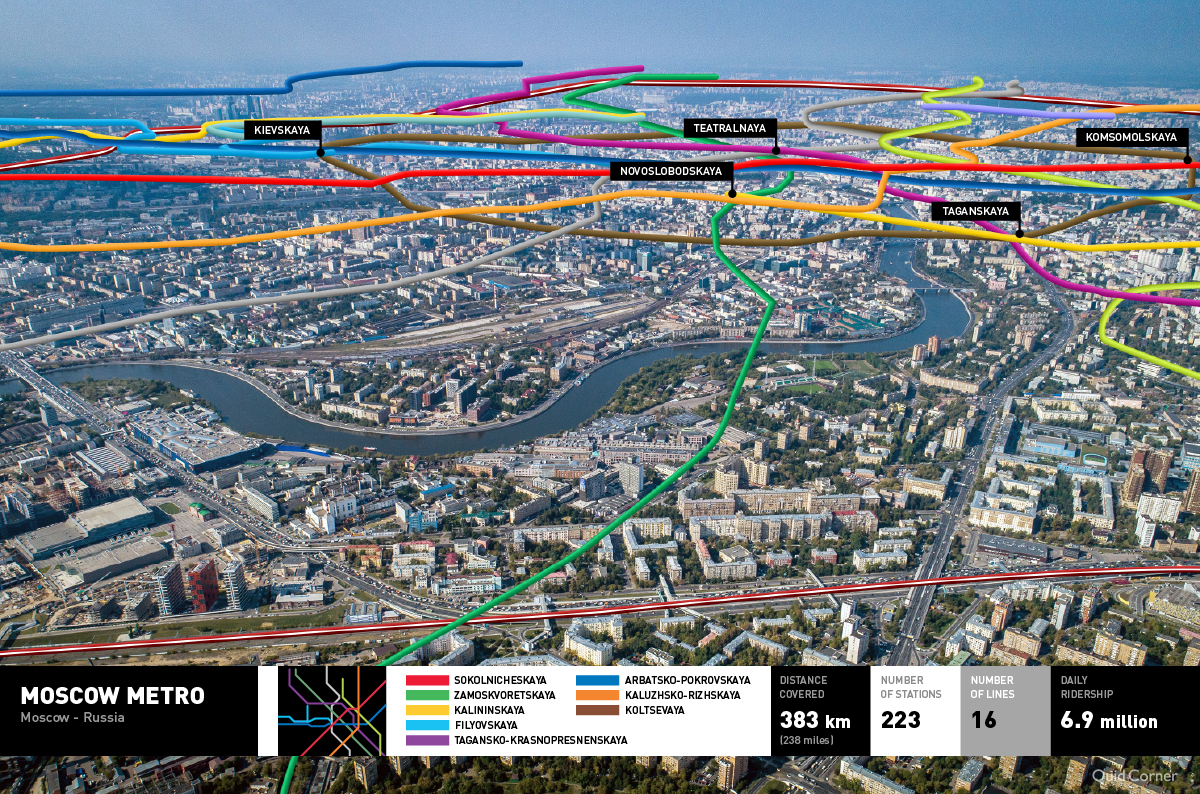
Before the underground opened in 1935, the first passenger train driver spent days practising driving around the city with a Stalin-shaped dummy on-board ahead of welcoming the Soviet leader on board as the metro’s first official passenger. After Stalin’s death in the 1950s, the décor was pared back to reflect the down-playing of his personality cult.
6. Mexico City Metro
Tracing your journey around the Mexico capital’s subway system would take considerably more time (and cartography skill) today than when it opened in 1969: in the intervening half-century, the metro has expanded from a just a single line to twelve branches webbing together some 195 stations.
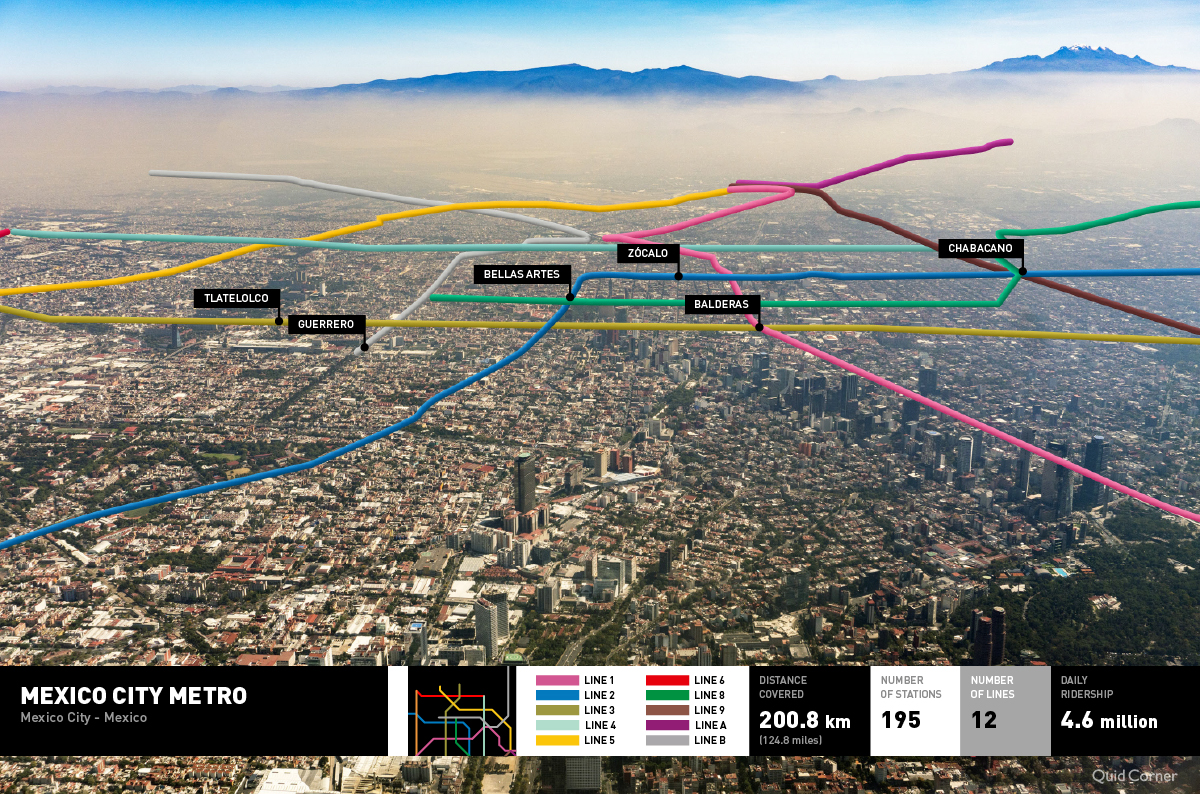
The trains themselves reflect concerns that are equally felt on the surface: many are rubber-tired to protect against earthquakes, and each train has a carriage for women and children only, to guard against pests. More positively, every station has a specially-designed identifying icon such as an elephant, a gourd, or a pile of apples – an arty hangover from the days when literacy levels were much lower.
With so much going on downstairs on the underground, will you remember where in the city you are?
Summary
Many subway systems were left out of this article, which was originally called 6 Aerial Views of the World’s Oldest Metro Systems…
…but as the oldest line of the Budapest Metro subway system, Line 1 has been in continuous operation since it was first inaugurated on Saturday, May 2, 1896 — with only the underground railway system in London being in operation longer — and I had the opportunity to experience riding as a passenger on it.
I am also surprised that the subway system in New York — which opened to the public on Thursday, October 27, 1904 — was not included in this article. The metro systems in Seoul and Budapest could have also been contenders — although the metro system in Budapest is not as elaborate.
This list of articles which I have written over the years at The Gate pertain to subway systems — I still have to write articles about the metro systems which serve Seoul and Shanghai, amongst others — and I cheated with one article about a tram at an airport:
- Video: New York Subway System in 1949
- Subway Tunnel Slated to Be Closed for 18 Months in New York
- The Historic Line 1 Subway in Budapest: A Photographic Chronology
- My Experience With the Washington Metro to Dulles Airport: More Details
- Too Many Subway Cards. What to Do?!?
- Alert: Entire Washington Metro Shut Down All Day Today
- Trams Out of Service Until April 2019 at Detroit Metropolitan Wayne County Airport
Photograph ©2014 by Brian Cohen.

